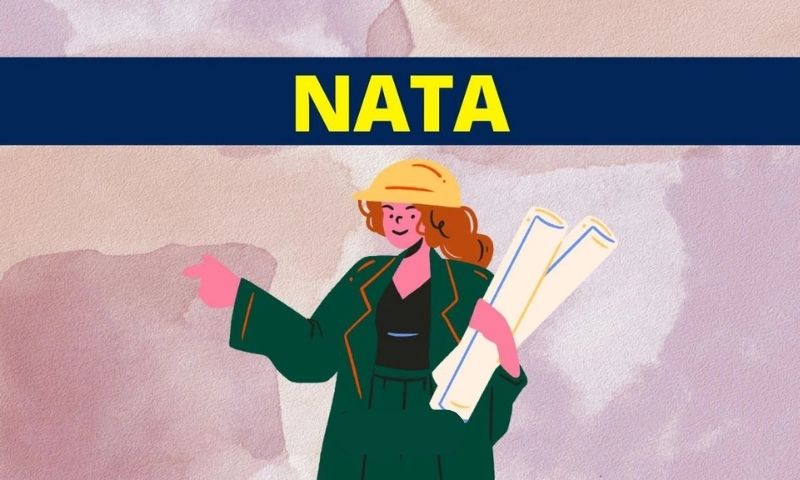How to Crack NATA Entrance Examination Easily

Discover effective tips and strategies to crack the NATA entrance examination with ease
How to Crack NATA Entrance Examination Easily
The National Aptitude Test in Architecture (NATA) is a crucial examination for aspiring architects in India. Successfully cracking the NATA entrance exam can open the doors to some of the finest architectural institutions in the country. But how can you prepare effectively to ensure your success on your first attempt? This comprehensive guide will provide you with all the information you need to crack the NATA entrance examination easily.
NATA Entrance Exam Eligibility
Before diving into the preparation process, it's essential to understand the eligibility criteria for the NATA entrance exam. To be eligible, candidates must have completed their 10+2 education with at least 50% marks in Physics, Chemistry, and Mathematics. Additionally, candidates should have a minimum aggregate score of 50% in the qualifying examination.
NATA Entrance Exam Guidelines
Understanding the guidelines and exam structure is vital. The NATA entrance exam is divided into two parts: Part A and Part B. Part A focuses on drawing, and Part B assesses your aesthetic sensitivity. Each part is timed, so time management is crucial.
NATA Entrance Preparations: How to Crack It the First Time?
1. Understand the Exam Format
To crack NATA, you need to understand its format thoroughly. Part A consists of two drawing questions, which evaluate your drawing skills, imagination, and creativity. Part B assesses your aesthetic sensitivity through 40 multiple-choice questions.
2. Create a Study Schedule
Plan your study schedule wisely. Allocate more time to your weaker areas, but ensure that you cover all subjects. Consistency is the key to success.
3. Mock Tests
Practice with NATA mock tests to get a feel for the actual exam. This helps you manage time, improve your accuracy, and reduce exam anxiety.
4. Study Material
Invest in good study materials and reference books that cover the NATA syllabus comprehensively. Some recommended books include "A Complete Self Study Guide for B.Arch Entrance Examination" by P.K. Mishra and "NATA (B.Arch) Guide to Bachelor of Architecture Entrance Examination" by GKP.
NATA Entrance Exam Pattern: Sectional Weightage
Understanding the sectional weightage of the NATA entrance exam can help you prioritize your preparation.
- Drawing carries the most weightage, accounting for 80 out of 200 marks.
- Aesthetic Sensitivity is also essential, accounting for 120 marks.
NATA Exam Syllabus and Books
To succeed in NATA, you must be well-versed in the syllabus. The syllabus primarily covers:
- Drawing: Geometrical drawings, 3D objects, perspective drawings, and more.
- Aesthetic Sensitivity: Visualizing different scenarios, mental ability, and architectural awareness.
NATA Entrance Preparation Tips
Here are some additional tips to enhance your NATA preparation:
1. Stay Updated
Keep yourself updated with the latest architectural trends and developments. This can help you in both the drawing and aesthetic sensitivity sections.
2. Time Management
Practice time management during your preparation and the actual exam. Allocate time wisely to each question and section.
3. Join Coaching Classes
Consider enrolling in a reputed coaching institute for NATA preparation. Experienced mentors can provide valuable insights and guidance.
What Are the NATA Entrance Preparation Materials?
Your preparation materials should include:
- Study guides and reference books.
- NATA sample papers and mock tests.
- Drawing and sketching materials.
- Aesthetic sensitivity practice tests.
NATA Entrance Exam Date
Keep an eye on the official NATA website for updates regarding the exam date. Plan your preparation schedule accordingly to ensure you have sufficient time for revision.
NATA Entrance Cut-off
To secure admission to your desired architecture college, it's essential to know the cut-off scores. Different institutions may have varying cut-off criteria, so research this information thoroughly.
Cracking the NATA entrance exam is challenging, but with the right approach and dedication, you can achieve success on your first attempt. Understand the exam format, manage your time efficiently, and practice consistently. By following these guidelines, you can confidently take on the NATA entrance examination and pave your way to a successful career in architecture.
FAQs
1. When is the NATA entrance exam typically held?
The National Aptitude Test in Architecture (NATA) entrance exam in India is typically held twice a year. The exact dates for the NATA exam can vary from year to year, but the two main attempts are generally conducted in the following timeframes:
First Attempt: The first attempt of NATA is usually held in April. This allows candidates to appear for the exam early in the year.
Second Attempt: The second attempt of NATA is typically conducted in July. This provides an additional opportunity for candidates who may have missed the first attempt or wish to improve their scores.
It's important to note that the specific dates for the NATA exam, as well as the registration and application deadlines, are determined and announced by the Council of Architecture (CoA), which is the governing body responsible for conducting NATA. Therefore, I recommend visiting the official NATA website or checking with the CoA for the most up-to-date information regarding exam dates and related details for the year in which you plan to take the NATA exam.
Candidates planning to appear for NATA should regularly check the official website and register for the exam well in advance of the application deadline to secure their seats for the desired attempt.
2. What are the best books for NATA preparation?
Preparing for the National Aptitude Test in Architecture (NATA) requires a combination of reference books, study materials, and practice guides that cover various aspects of the exam. Here are some of the best books and study materials for NATA preparation:
"A Complete Self Study Guide for B.Arch" by P.K. Mishra: This book is a comprehensive guide covering all the topics required for NATA preparation. It includes theory, practice questions, and solved papers.
"NATA (B.Arch) Guide" by Ar. Shadan Usmani: This guidebook provides a detailed overview of the NATA exam, along with sample papers and practice questions. It's known for its clarity and extensive coverage of topics.
"NATA & B.Arch Question Bank" by Ar. Shadan Usmani: This question bank is a valuable resource for practicing a wide range of questions related to drawing, mathematics, and aptitude, which are essential for NATA.
"NATA (National Aptitude Test in Architecture) Entrance Exam Guide" by Surendra Kavimandan: This book includes a comprehensive study plan, solved papers, and practice questions to help you prepare effectively for the exam.
"NATA & B.Arch Complete Self Study Material: Entrance Examination" by Ar. Shadan Usmani: This self-study material includes theory, practice questions, and drawing exercises, making it a comprehensive resource for NATA preparation.
"NATA (B.Arch) Guide by Dr. B. B. Singh and Er. Deepak Prashar: This guidebook provides detailed explanations and practice papers to help you understand the concepts required for NATA.
"NATA Exam Full Package" by Ar. Shadan Usmani: This package includes study materials, question banks, and a full-length mock test series to help you assess your preparation.
"NATA & B.Arch Complete Guide: Combined Book" by Ar. Shadan Usmani: This combined book covers all aspects of the NATA exam, including drawing, mathematics, and aptitude, making it a one-stop resource for preparation.
"NATA Mock Test" by Dr. Vinod Kumar: This book contains a series of mock tests designed to simulate the NATA exam environment, helping you improve your time management and test-taking skills.
"NATA Drawing Test: Workbook and Sketchbook" by Ar. Shadan Usmani: This workbook is focused on the drawing section of NATA and includes exercises, practice sheets, and sample drawings to enhance your drawing skills.
Remember that NATA includes both a drawing test and an aptitude test, so it's important to practice both aspects of the exam. Additionally, solving previous years' question papers and participating in mock tests can greatly improve your performance. Choose books that align with your learning style and complement your preparation strategy for NATA.
3. Can I crack NATA without joining a coaching institute?
Yes, it is possible to crack the National Aptitude Test in Architecture (NATA) without joining a coaching institute. Many candidates have successfully cleared the NATA exam through self-study and preparation at home. However, cracking NATA without coaching requires a disciplined and effective study plan. Here are some tips to help you prepare for NATA on your own:
Understand the NATA Exam Pattern: Start by thoroughly understanding the NATA exam pattern, including the number of questions, types of questions, and time limits for each section. This will help you create a study plan.
Gather Study Materials: Collect the necessary study materials, including NATA preparation books, sample papers, and drawing materials. Ensure you have access to relevant study resources.
Create a Study Plan: Develop a well-structured study plan that covers all sections of the NATA exam, including the drawing test, mathematics, and aptitude. Allocate specific time slots for each subject.
Focus on Drawing Skills: For the drawing test, practice sketching regularly. Work on your observation skills, perspective drawing, and creativity. Use sample questions and previous years' papers for practice.
Mathematics and Aptitude: For the mathematics and aptitude sections, study from NATA preparation books. Understand the concepts thoroughly and practice solving a variety of questions.
Solve Previous Years' Papers: Solving previous years' NATA papers is essential. It will familiarize you with the exam pattern and help you manage time effectively during the actual exam.
Online Resources: Utilize online resources, such as video tutorials, practice quizzes, and discussion forums, to clarify doubts and get additional practice.
Mock Tests: Take full-length NATA mock tests under timed conditions to simulate the exam environment. This will help you assess your progress and improve time management.
Regular Practice: Consistency is key. Dedicate time daily for NATA preparation. Regular practice will improve your skills and confidence.
Seek Feedback: If possible, share your drawing sketches and solutions with experienced artists or architects to get feedback and suggestions for improvement.
Stay Updated with Current Affairs: For the General Aptitude section, stay informed about current affairs and general knowledge topics. Read newspapers and watch news programs regularly.
Stay Healthy: Maintain a healthy lifestyle, get enough sleep, and manage stress effectively. A healthy body and mind contribute to better concentration and performance.
While coaching institutes can provide guidance and structured study plans, it's entirely possible to succeed in NATA through self-study if you are committed, organized, and focused in your preparation. Remember that practice, consistent effort, and self-assessment are key elements of your success in the NATA exam.
4. Is there negative marking in the NATA entrance exam?
No, there was no negative marking in the National Aptitude Test in Architecture (NATA) entrance exam. This means that candidates were not penalized for incorrect answers. In NATA, each question carried a certain number of marks, and candidates were awarded full marks for correct answers and received no deductions for incorrect responses.
However, please note that exam patterns and policies can change, and it's essential to verify the most up-to-date information regarding the NATA exam from official sources. To confirm whether there have been any changes to the marking scheme, including the presence or absence of negative marking, for the year in which you plan to appear for the NATA exam, visit the official NATA website or consult the NATA exam notification provided by the Council of Architecture (CoA). These sources will provide you with the most accurate and current details regarding the examination.
5. What is the minimum score required to pass the NATA entrance exam?
To pass the NATA entrance exam, candidates must score at least 80 out of 200 marks in total, with a minimum of 40 marks in the drawing section and 40 marks in the aesthetic sensitivity section. However, to secure admission to top institutions, you should aim for a higher score.
- Share This Job



Write A Comment
No Comments